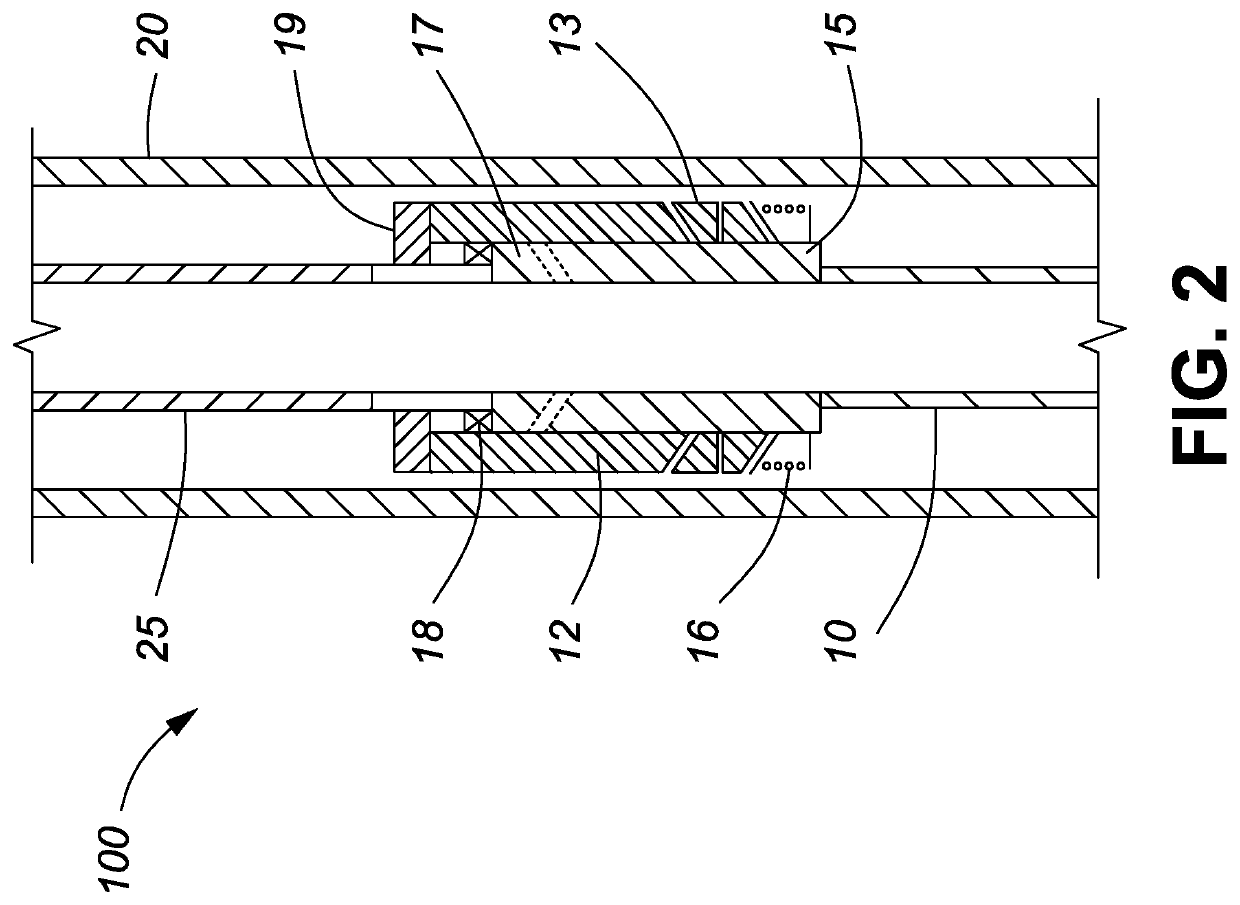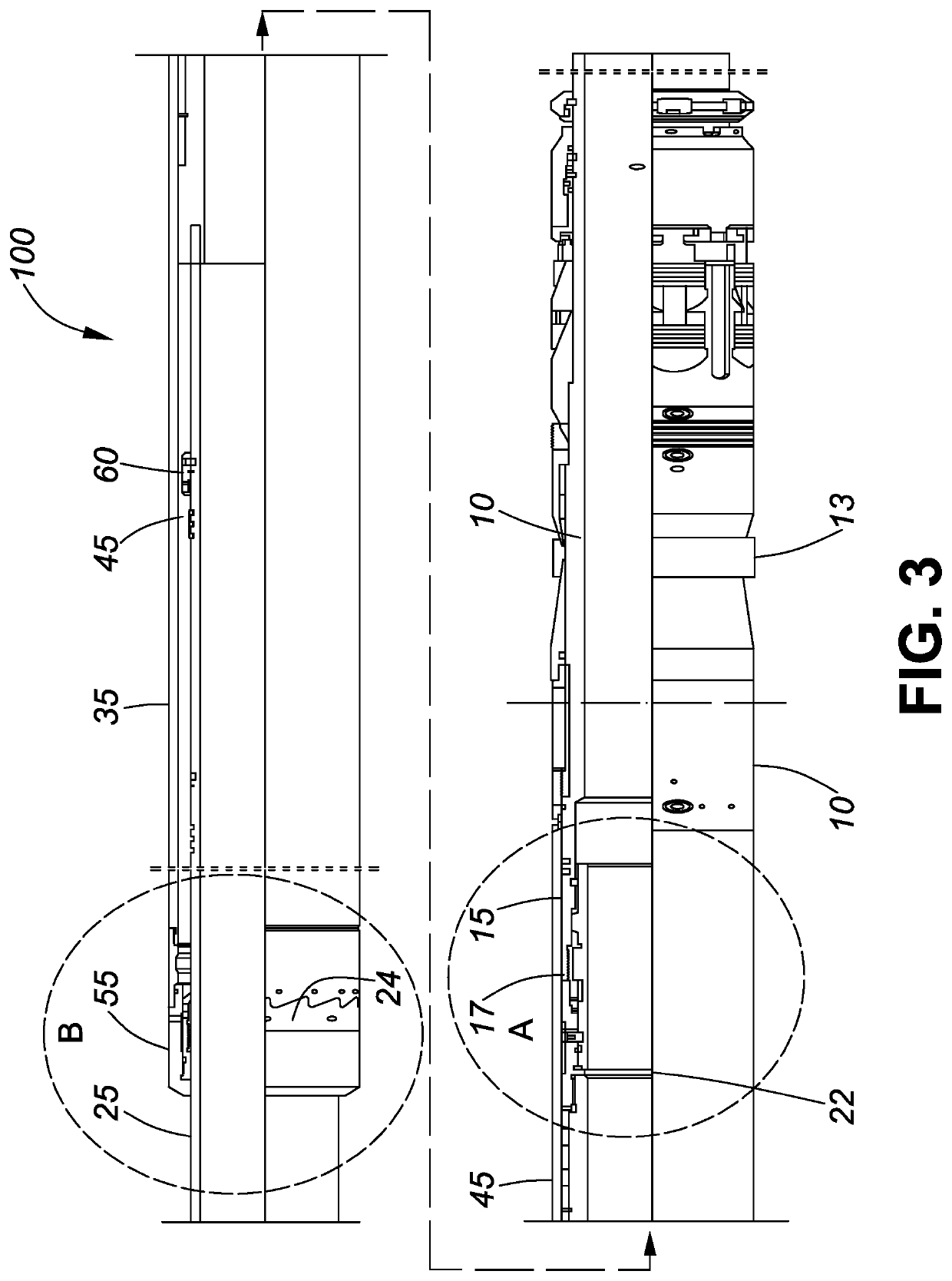Single trip liner hanger system
a single-trip, hanging system technology, applied in the direction of drilling casings, drilling pipes, borehole/well accessories, etc., can solve the problems of increasing cost, time and risk, restricting the inner diameter of both the running tool and the work string,
- Summary
- Abstract
- Description
- Claims
- Application Information
AI Technical Summary
Benefits of technology
Problems solved by technology
Method used
Image
Examples
Embodiment Construction
[0027]It should be noted that terms “upper”, “back”, “rear”, or “uphole” are used to refer to a feature on or closer to the surface side (upwell side) relative to a corresponding feature that is farther from the surface side, which farther feature is denoted by the terms “lower”, “forward”, “front” or “downhole”. For example, an “upper” end of a tubular generally refers to the feature relatively closer to the surface than a corresponding “lower” end. A feature that may be referred to as an“upper” feature relative to a “lower” feature even if the features are vertically aligned may occur, for example, in a horizontal well. Similarly, the terms “uphole”, “up”, “downhole” and “down” refer to the relative position or movement of various tools or objects, features, with respect to the wellhead.
[0028]It is to be understood that variants of the embodiments described and illustrated in this specification will become readily apparent to those skilled in the art.
[0029]FIG. 1 illustrates a con...
PUM
 Login to View More
Login to View More Abstract
Description
Claims
Application Information
 Login to View More
Login to View More - R&D
- Intellectual Property
- Life Sciences
- Materials
- Tech Scout
- Unparalleled Data Quality
- Higher Quality Content
- 60% Fewer Hallucinations
Browse by: Latest US Patents, China's latest patents, Technical Efficacy Thesaurus, Application Domain, Technology Topic, Popular Technical Reports.
© 2025 PatSnap. All rights reserved.Legal|Privacy policy|Modern Slavery Act Transparency Statement|Sitemap|About US| Contact US: help@patsnap.com



